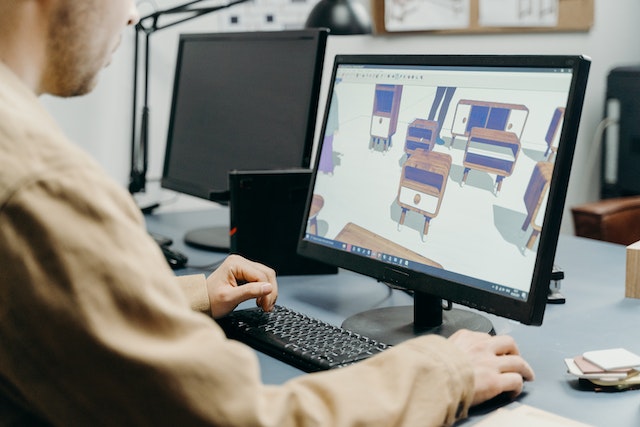If you’ve ever created a website (whether it’s DIY or in collaboration with a web designer), you know it’s a bit of a baby.
Not only is it time-consuming (and expensive to hire someone) to design and build the process, but the website itself has a significant impact on the future of your business. It is both functional and symbolic. In many ways, this identifies you and your business, like who you are, what you do, and how you do.
It is undoubtedly challenging to design and build something that fully and accurately represents you and your company and all of the aesthetic, functional, and logistical requirements associated with it.
So choosing the Right Web Designer to work within this process is an important decision.
Decide on a Budget
When choosing a budget for online design, this is (or should be) a case of “the more you play, the more you get.”
In the realm of web design and development, Softnix stands out as a company that prioritizes efficient timelines. Our dedicated team thoroughly assesses your requirements, estimating the necessary time for project completion. This timeframe, multiplied by our competitive daily or hourly rates, ensures that you receive quality service without compromising affordability. Choose Softnix for a seamless blend of expertise, timeliness, and cost-effectiveness in web design and development.
If their price is similar, but the total cost is lower, you can be sure that they will spend less time understanding your business, learning the knowledge needed to make your website a success, and achieving it at a high level.
Before you start spending money, it is essential to decide how important your website is to you. For example, are you looking for a website just because it has already been built, or could it be a significant source of income for you?
If you don’t consider your site a valuable asset, perhaps you underestimate the number of people searching for your product or service on the Internet? Google offers a keyword scheduler that shows you the number of people searching for a particular keyword or phrase. This can be a good start in trying to understand what a good website can bring.
Do Your Homework
You need to do thorough research, and we’re not just talking about which website design company you like.

To find the Right Web Designer, you need to answer the following questions: How big is your project? How many pages does your site need? Are there any particular features on your wish list? Are you looking for someone who can help you with editing and SEO or just designing components?
Now that you’ve answered these questions, it’s time to consider your options. The first thing will tell you to look at the portfolios of every company you are considering.
When looking at these portfolios, it is essential to pay special attention to the picture they are showing you. Be sure to visit the site itself. Take a look at the footer and see if the company is still running on its website (most designers and developers add a link to their website and appear in the footer).
Pay attention to how fast the pages load, as page speed is an essential factor in SEO and is heavily dependent on the quality of your website. You May Like to Know about Laptops for SEO Professional.
See what websites look like on your phone and computer. Is the layout simple? If you were a potential customer of this business, would you be able to quickly understand what it does and find the information you need with one or two clicks?
Remember, a portfolio is not an exhaustive list of everything a designer can do. If you like the look of their work, check out the features you don’t see and ask them if they can. You may be the first to request this feature!
Define Your Design Needs
What does your site look like? If you didn’t have to design something for the client, it’s hard to see how difficult it is to turn a mistaken idea into a material creation in someone’s brain. Of course, there are bad designers, but as a rule, what better way do you specify your project needs?
Draw something – anything – to show even the most basic direction you want to go. Gather websites you like and tag what you like.
Also, keep in mind that some project resources can be developed by yourself, and the website designer will restructure these existing resources to build your website.

For example, if you have a non-profit business, you have to trust your visitors that their donations will go to deserving people. Contributions can be collect online through the integration of the WooCommerce donation plugin. Your website design should be reliable and build a trustworthy relationship with visitors as it’s much needed in a cause-based project.
Some customers even use automated project generators, such as Tailor’s Brands, to create a look that a web developer can embed and play with a theme or template. Once all the configurations are available, you can use them to choose the right website designer.
Look at Their Portfolio
Past work is one of the best ways to understand the potential of a designer’s future work visually.
There is one caveat, however: since most parts of the portfolio are designed for specific clients with specific project needs and objectives, keep in mind that a designer’s portfolio does not necessarily reflect their style or preferences. Often, designers are tasked with interpreting and bringing to life the style and branding of someone else.
If you see a general project theme in your portfolio, you can be sure that this is the basic aesthetic of a designer, and your website can be designed with that in mind. However, if you see a wide variety of styles and aesthetics, the designer is likely to work with clients from various social backgrounds.
They are Technologically Savvy
This may seem obvious, but you need a website designer who knows the latest best practices and practices to create easy-to-find and easy-to-use websites.
When it comes to online design, every designer should have skills, but most importantly, keep adding to this list. Technology is not static. Google’s algorithm is not fixed. Therefore, your developer doesn’t have to be fixed.
When looking at a Potential or Right Web Designer ‘s portfolio, make sure it has examples of responsive websites. With more people browsing your phone than desktops or laptops, it’s essential for your designer to ensure that your website is optimized, no matter what device you access it from.










